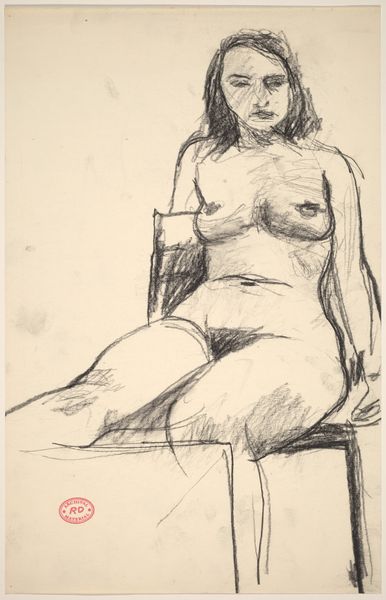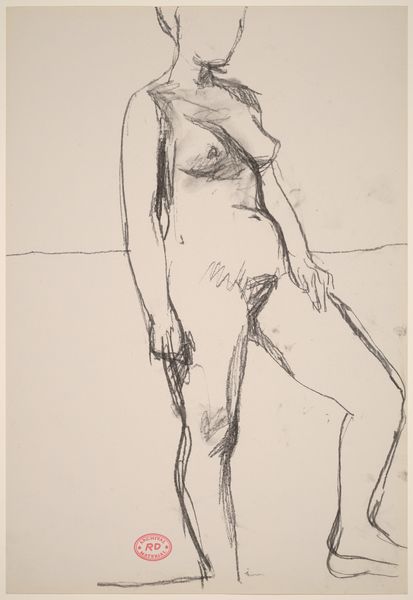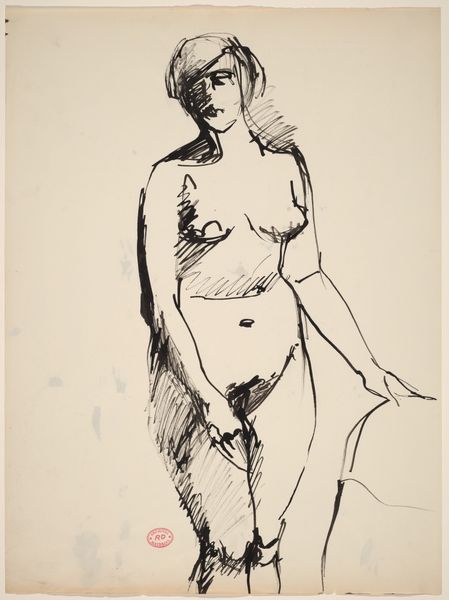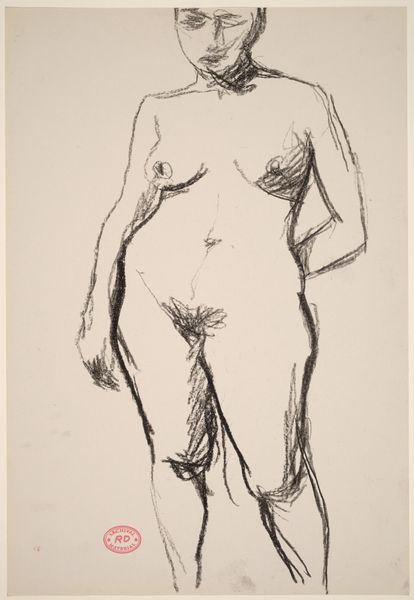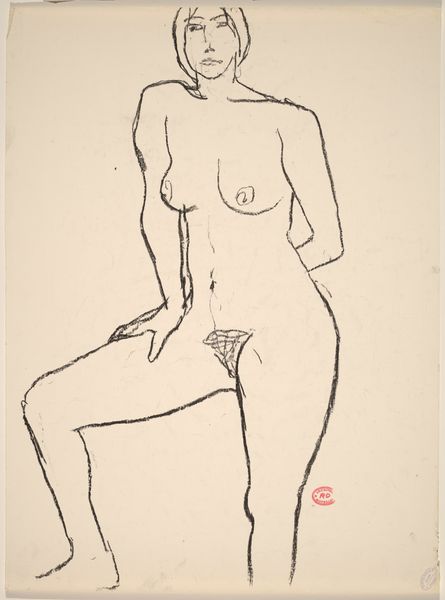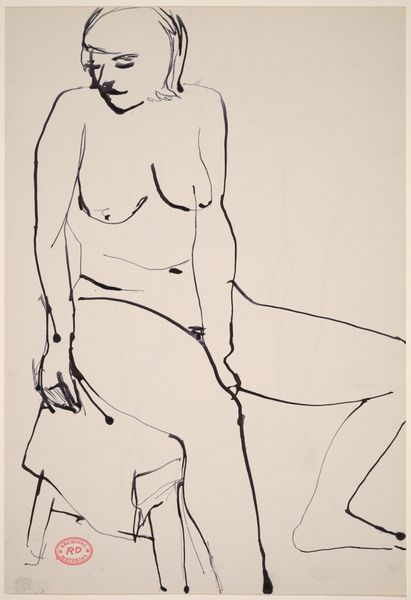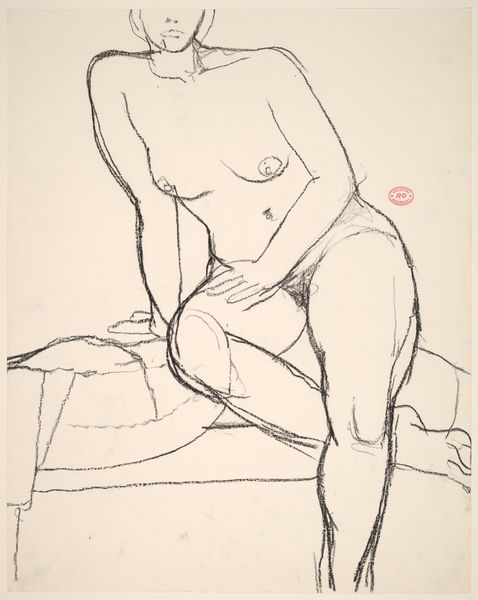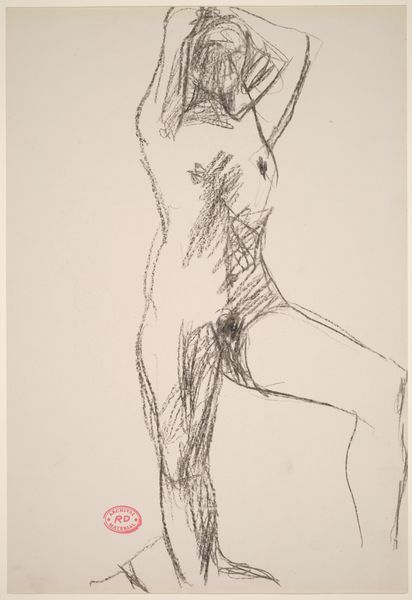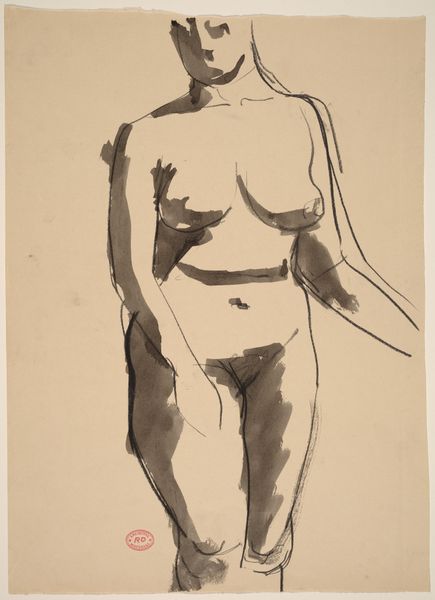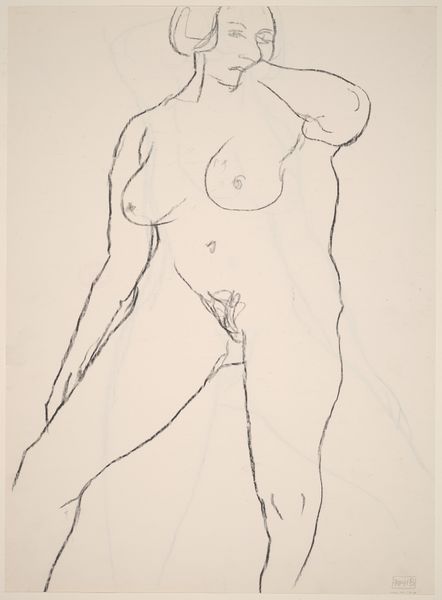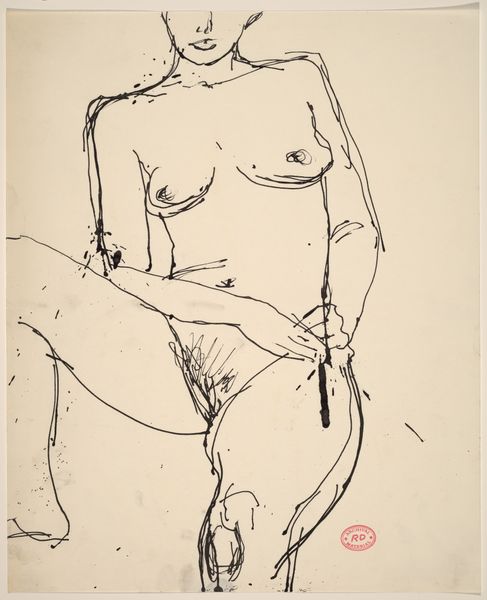![Untitled [seated female nude leaning on a support] by Richard Diebenkorn](/_next/image?url=https%3A%2F%2Fd2w8kbdekdi1gv.cloudfront.net%2FeyJidWNrZXQiOiAiYXJ0ZXJhLWltYWdlcy1idWNrZXQiLCAia2V5IjogImFydHdvcmtzL2ZkZTU5NWY5LTA3YjgtNGY0OS1hYTZmLTk3ZDVkMGJiNThiZS9mZGU1OTVmOS0wN2I4LTRmNDktYWE2Zi05N2Q1ZDBiYjU4YmVfZnVsbC5qcGciLCAiZWRpdHMiOiB7InJlc2l6ZSI6IHsid2lkdGgiOiAxOTIwLCAiaGVpZ2h0IjogMTkyMCwgImZpdCI6ICJpbnNpZGUifX19&w=3840&q=75)
Untitled [seated female nude leaning on a support] 1955 - 1967
0:00
0:00
drawing, graphite
#
portrait
#
drawing
#
pencil sketch
#
figuration
#
bay-area-figurative-movement
#
graphite
#
nude
Dimensions: overall: 40.6 x 27.9 cm (16 x 11 in.)
Copyright: National Gallery of Art: CC0 1.0
Editor: This is Richard Diebenkorn's "Untitled [seated female nude leaning on a support]," created sometime between 1955 and 1967, a graphite drawing. I’m really drawn to the immediacy of the lines, it feels very raw and expressive. What strikes you when you look at this piece? Curator: It’s fascinating to consider Diebenkorn's choice of graphite here. He was working during a period obsessed with abstract expressionism. So, by grounding himself in the traditional subject matter of the nude but using such direct, almost industrial materials, he’s subtly challenging that hierarchy. What kind of labor does the artist perform to produce this drawing, and for what audience? Editor: So, it's like the material and the subject matter are in conversation with each other? The roughness of the graphite feels almost… rebellious? Curator: Precisely! The materiality resists the expected "high art" polish. Look at the massing of graphite near the bottom of the work, representing shadows beneath the sitter: This technique, and the subject's pose, direct our eyes immediately to it, shifting from pure form toward considering social realities, even exploitation, and how the artwork has a use value. Editor: I see what you mean. It isn't just about appreciating beauty; it's about understanding how it was produced and its implications. Did Diebenkorn make preliminary sketches for larger artworks? Curator: Quite possibly. These rapid studies were part of a continuous artistic labour to express volume and dimensionality on a two-dimensional surface. The choice of graphite offers accessibility; a commonplace product available for commercial endeavors transformed by artistic practice into ‘fine art.’ Editor: It’s almost like he's elevating the ordinary through the act of creation itself. Thanks for this, it’s made me appreciate the drawing and its relationship with everyday objects much more deeply. Curator: My pleasure. The point is to understand how the material context influences meaning!
Comments
No comments
Be the first to comment and join the conversation on the ultimate creative platform.
